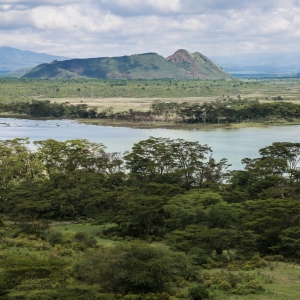Federal Water Tap, September 8: Satellite Imagery Shows Glacial Lake Growth
The Rundown
Researchers detail the global growth of glacial meltwater lakes. The EPA revises an Obama administration rule on polluted wastewater from coal-fired power plants. The EPA forms a new western office to focus on mining cleanups and announces two water pollution-prevention projects along the U.S.-Mexico border. The EPA provides research funding to study PFAS pollution and environmental contamination during extreme weather events. The EPA adds six sites to the Superfund list and proposes four more. The Bureau of Reclamation solicits proposals for pumped storage hydropower at Grand Coulee Dam. And lastly, Congress returns with a focus on coronavirus relief and the 2021 budget.
By the Numbers
6: Sites added to the federal Superfund list, including an electroplating facility in Blades, Delaware that contaminated groundwater with heavy metals and PFAS. Four sites were proposed for the list, including a former dry cleaning site in Billings, Montana that released chlorinated solvents into groundwater. (EPA)
$4 million: Research funding provided to five universities to study the community environmental impact of extreme weather. Projects include coastal flooding of contaminated sites (UCLA), flooding and wastewater contamination in Puerto Rico (Iowa State), and release of industrial chemicals during floods in the Houston area (Texas A&M). (EPA)
$4.8 million: Research funding provided to three universities to study PFAS contamination in rural communities. Indiana University and Purdue University will study the occurrence of the chemicals in household wells, while the University of Georgia will investigate treatment technologies. (EPA)
News Briefs
EPA Revises Power Plant Effluent Rule
The U.S. Environmental Protection Agency reworked elements of a 2015 rule designed to reduce discharges of toxic heavy metals in wastewater from coal-fired power plants.
The rule changes the waste-treatment technologies that power plants can use to meet federal standards, in some cases allowing more pollution. The rule also extends compliance deadlines and exempts plants that will close or switch away from coal by 2028. It sets different standards for plants that operate occasionally and those that voluntarily undertake measures to change their treatment processes.
The changes apply to two waste streams: water from scrubbers that remove sulfur dioxide from air emissions and water from bottom ash, which is the coal that falls to the bottom of the burners.
U.S.-Mexico Border Water Pollution Prevention
The U.S. government will undertake two projects in Mexico to reduce flooding and water pollution in the Tijuana River watershed.
One project will expand wastewater treatment in the watershed. The other will remove trash and debris from a channel.
In addition to those projects, Congress allocated $300 million to address polluted water along the U.S.-Mexico border.
New EPA Office
EPA officials said that they will establish a new agency office for coordinating the cleanup of mining waste and abandoned mines in the western states.
The Office of Mountains, Deserts, and Plains will be located in Denver. Andrew Wheeler, administrator of the EPA, said he wanted an oversight office that is “closer to communities.”
Studies and Reports
Glacial Lakes Are Growing
Researchers used satellite imagery to detail the global growth of glacial meltwater lakes.
These lakes, which form as glacial ice melts, increased in volume by about 48 percent between 1990 and 2018.
If they overtop their banks or break through their natural dams, the lakes pose a severe flood risk for downstream communities. The hazard is highest in the Andes and Himalayas.
The study, based on NASA and U.S. Geological Survey data, was published in the journal Nature Climate Change.
On the Radar
Congress Returns
The House and Senate are back from their summer breaks, and there is much to do.
Topline items are the next coronavirus response bill and the 2021 budget.
The House passed the HEROES Act in May, but talks with the Senate on a compromise bill have stalled. Aid to state and local governments appears to be a main sticking point. The House included $915 billion in its bill, but Senate Republicans and the White House are offering $150 billion.
Some states, including Michigan and North Carolina, are using money from the CARES Act, the earlier relief package, to support water utilities and their customers who are behind on bills.
The budget is due by September 30, but observers think that completing all the appropriations bills by the end of the month is unlikely. In that case, a continuing resolution would be needed as a stopgap.
Grand Coulee Dam Pumped Storage Power Plan
The Bureau of Reclamation is soliciting proposals from groups that might be interested in developing pumped storage hydropower using the reservoir formed by Grand Coulee Dam, in Washington state.
Private sector groups are allowed to develop hydropower at federal facilities. Pumped storage hydropower uses a pair of reservoirs – one at a higher elevation — to generate power during peak times. During off-peak times, the water is pumped back to the higher reservoir.
Proposals, including an outline of environmental impacts, construction costs, permitting requirements, and acquisition of water and land rights, are due January 28, 2021.
Federal Water Tap is a weekly digest spotting trends in U.S. government water policy. To get more water news, follow Circle of Blue on Twitter and sign up for our newsletter.
Brett writes about agriculture, energy, infrastructure, and the politics and economics of water in the United States. He also writes the Federal Water Tap, Circle of Blue’s weekly digest of U.S. government water news. He is the winner of two Society of Environmental Journalists reporting awards, one of the top honors in American environmental journalism: first place for explanatory reporting for a series on septic system pollution in the United States(2016) and third place for beat reporting in a small market (2014). He received the Sierra Club’s Distinguished Service Award in 2018. Brett lives in Seattle, where he hikes the mountains and bakes pies. Contact Brett Walton





Leave a Reply
Want to join the discussion?Feel free to contribute!